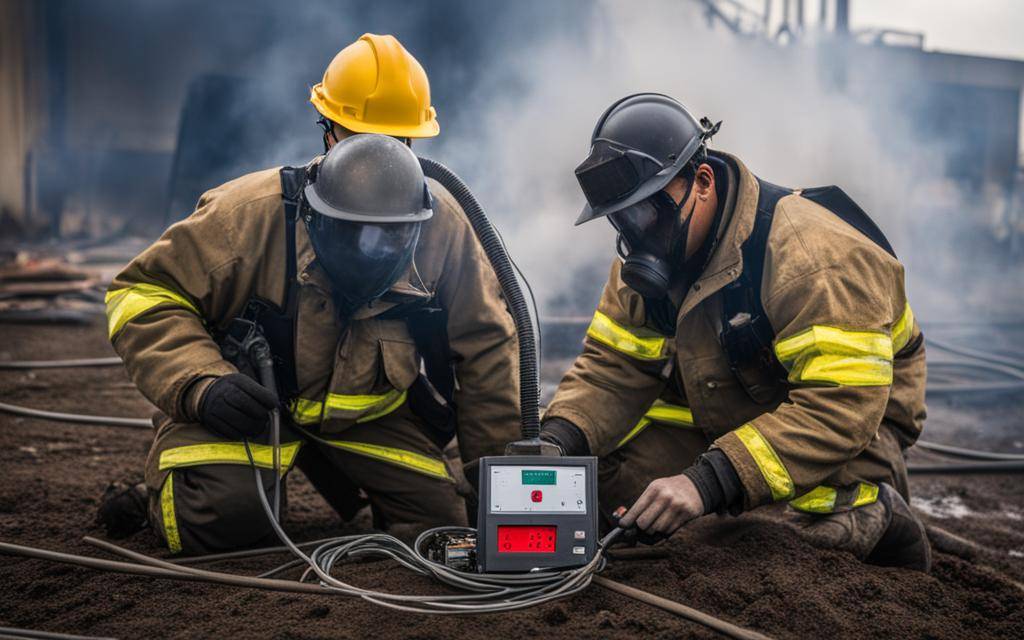Gas detection plays a vital role in maintaining a safe work environment. However, there are several common failures that can compromise the effectiveness of gas detectors. It is essential to be aware of these failures and take necessary precautions to address them.
One of the most prevalent failures is the lack of regular testing. Without regular testing, gas detectors may not provide accurate readings or fail to detect hazardous gases altogether. Neglecting maintenance tasks, such as cleaning and replacing filters, can also lead to incorrect readings or malfunctions.
Miscalibration is another common failure. When gas detectors are miscalibrated, they may trigger false alarms or fail to detect hazardous gases when needed. It is crucial to follow the manufacturer’s instructions for calibration and use certified calibration gases for accuracy.
By avoiding these common mistakes, gas detectors can be a reliable asset in ensuring workplace safety. In the following sections, we will explore how to address these failures and maintain the proper functioning of gas detection equipment.
How to Address the Common Failures in Gas Detectors
To address the common failures in gas detectors and ensure workplace safety, it is essential to establish best practices for maintenance and troubleshooting. By following these steps, gas detector failures can be effectively addressed, and the detectors can continue to provide reliable safety measures.
Regular Testing and Maintenance
Regularly testing and maintaining gas detectors is crucial for their proper functioning. This includes:
- Checking for physical damage
- Testing sensor functionality
- Calibrating the detectors according to manufacturer guidelines
Proper Installation
Proper installation of gas detectors is essential to ensure accurate readings. Consider the following:
- Ensure the detector has a clear air flow
- Mount the detector correctly
Understanding Safety Certificates and Detector Types
Being knowledgeable about safety certificates and understanding the pros and cons of different types of gas detectors is crucial.
Educating Users
Educating users about proper use and storage of gas detectors can prevent damage and incorrect readings. Provide clear instructions on how to operate, store, and maintain the detectors to ensure their effectiveness.
By following these best practices, individuals can effectively address common failures in gas detectors, troubleshoot any issues that arise, and maintain a safe work environment. Gas detectors are a vital tool in protecting against harmful gases, and by addressing these failures, their reliability can be ensured.
Importance of troubleshooting and cross-sensitivity in gas detection
Troubleshooting is an essential part of gas detection maintenance. When encountering issues with a gas detector, there are some key steps to take. If the detector fails to turn on, it is important to check the power source, replace the battery if necessary, and inspect the power cable for any damage. Proper power supply is crucial for accurate readings.
If a gas detector fails to calibrate, it may require recalibration or indicate an issue with the sensor. Sensors have a service life, typically lasting two to three years, and may need to be replaced. It is also important to regularly clean the sensor housing and filter to ensure reliable and accurate readings.
Cross-sensitivity is another factor to consider in gas detection. The presence of non-target gases can affect readings and lead to false alarms or missed detections. It is crucial to be aware of potential cross-sensitivity and educate workers about how various gases can impact the sensitivity of the gas detectors. This knowledge helps ensure accurate readings and proper response to hazardous gases.
By addressing troubleshooting and understanding cross-sensitivity in gas detection, equipment can be properly maintained and provide reliable safety measures. Regular maintenance, calibration, and awareness of potential cross-sensitivity contribute to the effectiveness and performance of gas detectors in maintaining a safe work environment.

